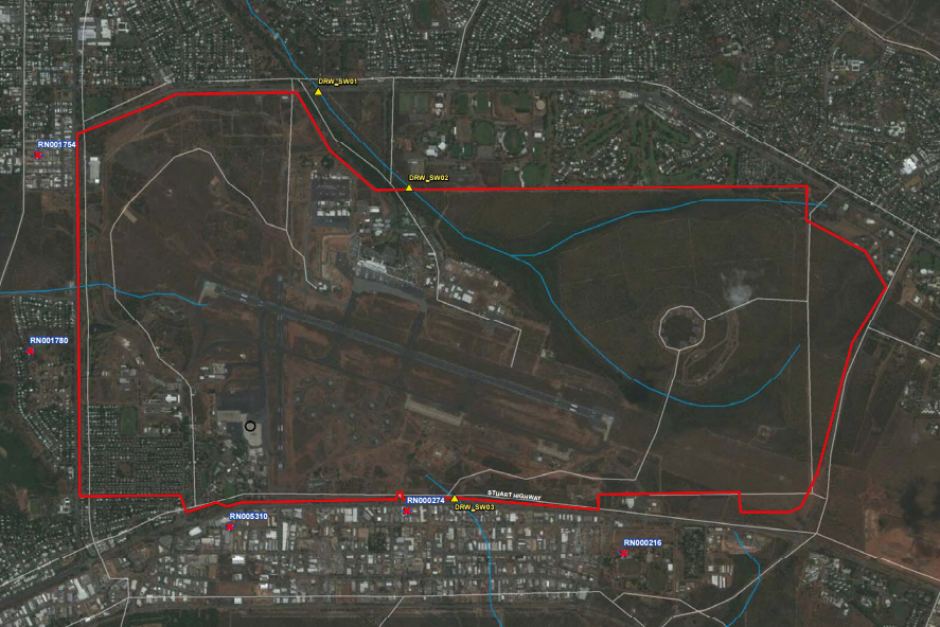Category: Defence Forces / Environmental Impact / Chemicals and Pharmaceuticals / Environmental Health
Toxic chemicals found in drinking water near RAAF Base Tindal
Tuesday, 8 Nov 2016 14:48:08 | Neda Vanovac Neda Vanovac And Stephanie Zillman

RAAF Base Darwin and wells showing surface water results exceeding acceptable screening levels. (Supplied: Department of Defence)
Toxic chemicals associated with the historic use of firefighting foams have been found on or around all three sites tested by the Defence Department in the Northern Territory, including in a sample of drinking water near RAAF Base Tindal, near Katherine.
Defence has released a report into a preliminary sampling program at Tindal, RAAF Base Darwin and at Robertson Barracks, and said year-long in-depth studies for each site would begin in early 2017.
The report confirmed the toxic chemicals had been found at all 12 sites tested nationally by the department.
In the Northern Territory, 16 sites around RAAF Bases Tindal and Darwin as well as Robertson Barracks in Palmerston were sampled, and the chemicals were detected to varying levels on or around all three bases.
Despite Darwin being slated for a more comprehensive investigation, samples of groundwater, which is used for drinking, were not collected.
However, PFAS was detected at higher-than-acceptable levels at two of three test sites near the bases, for surface water, which is used recreationally, for swimming, fishing and water sports.
At RAAF Base Tindal, of seven groundwater sites tested, one returned levels higher than acceptable, as well as one of two surface water sites.
At Robertson Barracks one surface water and four groundwater sites were tested, but the PFAS detected did not exceed interim screening levels.
The report focuses on chemicals which were used in aqueous film-forming foam, which was previously used to fight liquid fires on the bases.
The chemicals are known as per- and poly-fluoroalkyl substances (PFAS) and were commonly used in a variety of household products such as non-stick cooking pans, waterproof fabric, furniture, cleaning chemicals, food packaging, and in some industrial processes.
They are a cause for concern because they do not degrade in the natural environment, and the United States Environment Protection Authority has found there is a possible link between one of the chemicals, perfluorooctanoic acid (PFOA) and cancer, although there is not yet any conclusive evidence of that link.
- About Us
- |
- Terms of Use
- |
-
 RSS
RSS - |
- Privacy Policy
- |
- Contact Us
- |
- Shanghai Call Center: 962288
- |
- Tip-off hotline: 52920043
- 沪ICP证:沪ICP备05050403号-1
- |
- 互联网新闻信息服务许可证:31120180004
- |
- 网络视听许可证:0909346
- |
- 广播电视节目制作许可证:沪字第354号
- |
- 增值电信业务经营许可证:沪B2-20120012
Copyright © 1999- Shanghai Daily. All rights reserved.Preferably viewed with Internet Explorer 8 or newer browsers.




 Send to Kindle
Send to Kindle